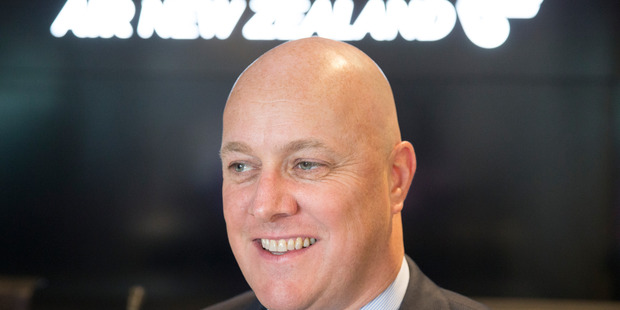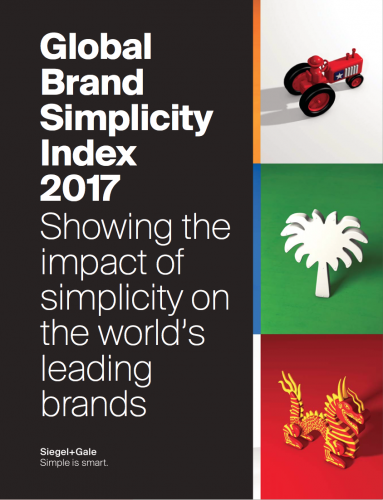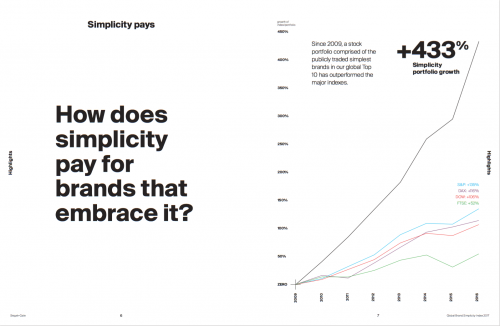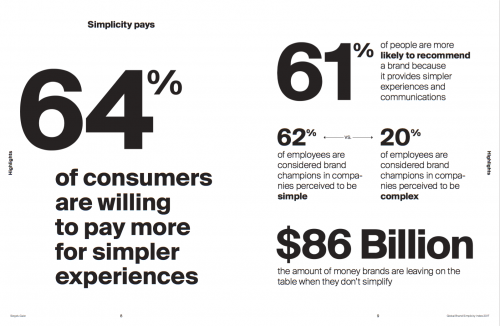If brand is such a valuable asset then why is it that businesses spend little or no time treating it as such?
Of course one of the answers lies in the fact most businesses are head-down, bum-up, just trying to deal with the daily operation of their business and finding the next sale. But if you can change your perspective to know investing in your most valuable asset pays off handsomely then you’re on to a winner.
Let’s explore some benefits of having a well designed brand that reinforces these thoughts.
1. Business direction & perspective
Often the businesses that we deal with have got themselves lost in the fog of their own business. Over ten years there typically has been any, or all, of the following:
a) following-your-nose has lead you down all sorts of paths meaning lost business direction
b) different product or service offerings have been tested, trialled, launched, failed or kept resulting in a confused customer offering and positioning in their mind
c) various people have come and gone over the years all with different opinions on how the brand should look, feel and speak to customers meaning the brand has lost consistency.
By having a brand that is consolidated and clearly understood by the directors or owners, means that the business direction is crystal clear. We often say every business decision you make should be able to be answered against your brand – and that’s a powerful tool. For example, “should we expand into this market or offer this product that we’ve seen?”. If you clearly understand your brand and business then the answer should be clear – does it align to, and build the value of our brand. And this clarity drives business growth.
New Zealand companies Xero and Allbirds are great examples of businesses started with a clear direction articulated extremely well. A first to mind in a company that has successfully come back to a core value is Shell, now Z Energy. Their rebrand took them out of price competition to customer-centric service.

2. Staff alignment
Similar to points a to c above, often the employees of clients we work with are confused about what their brand stands for, why the company truly exists and how it’s unique compared to the competition. And when employees, who are often at the coalface selling or delivering the business, can’t articulate who you are, what you do and why you’re different then how is a customer expected to figure it out!
Through a process of understanding and engagement, they are intrinsically more involved with the brand, they understand it better and can actually articulate the business offering powerfully. But more than that, often they have a renewed love of ‘their brand’. Enthusing about it like a new love to their friends, family, network and most certainly to potential customers.
But the most important aspect relates to staff attraction and retention. If you have a brand that clearly communicates who it is, what you stand for and why, then you attract staff that align with those beliefs too. This means you instantly have a group that are passionate about your business, goals, products or change you’re trying to make. This alignment, passion and common motivation mean you’ll have a happier, inclusive team culture and everyone will give their blood, sweat and tears to try and achieve it. Much more so than simply paying someone to do a job.
In May Air New Zealand was awarded ‘NZ’s most attractive employer 2017’. It’s a company that generates great pride in a brand that is part of the national psyche.

Air New Zealand chief executive Christopher Luxon said he was thrilled. Photo / Nick Reed
3. Customer clarity
With internal clarity you have given your customers and more importantly potential customers the very best platform to understand your brand, how you’re different and why they should spend their hard-won cash with you. The numerous benefits here are the foundation of competitive advantage.
 As the saying goes “being everything to everyone is being nothing to anybody” – you want to attract custom and a following from people who align and believe in what you believe. This means they’ll likely spend a higher amount, more often and be loyal to your brand. The 2017 research report of the Global Brand Simplicity index demonstrated that a portfolio comprised of publicly traded ‘simple brands’ outperformed all the major indexes with 433% growth, compared to 135% for S&P, 116% DAX and 106% for the DOW. It also states 64% of customers are willing to pay more for simpler experiences. And the bottom line is this is what you’re trying to achieve in business, right?
As the saying goes “being everything to everyone is being nothing to anybody” – you want to attract custom and a following from people who align and believe in what you believe. This means they’ll likely spend a higher amount, more often and be loyal to your brand. The 2017 research report of the Global Brand Simplicity index demonstrated that a portfolio comprised of publicly traded ‘simple brands’ outperformed all the major indexes with 433% growth, compared to 135% for S&P, 116% DAX and 106% for the DOW. It also states 64% of customers are willing to pay more for simpler experiences. And the bottom line is this is what you’re trying to achieve in business, right?
4. Brand equity
For any private business there’s generally five key exit strategies; Merger & acquisition, IPO, private sale, retain it as a cash-cow/silent investor or liquidate and close. All bar liquidation, having a powerful brand that reflects a clear direction, engaged staff and customers who love your brand only increase the value of this transaction. It’s commonly known the worlds most valuable brands, see 2017 list here, but the same applies to a business of any scale – create a powerful brand. And that has great value.
I’d use the analogy of residential real estate. People look for houses that are undervalued to get a bargain. A house with good bones but needs a paint, a new bathroom or kitchen and flooring. All of a sudden the asset has grown dramatically making a nice profit. Your brand is your house and it needs love, thought and attention so that it can become a shiny new asset that someone is willing to pay a premium for.
And similar to selling a house the transaction can be a very emotional time. Countless hours, blood, sweat and tears have probably put into it and you don’t just want to sell it to anyone. The dollar figure is one thing but the emotional needs of selling to the right person – someone who will do the brand justice, carry on your mission, look after your staff and customers – is hugely important. And this is where a powerful, clear brand – similar to attracting the right staff – will attract buyers who share that vision that you have. They can see it, feel it, believe it and most importantly live it once you are gone. And that means they are more emotionally connected to it and probably more likely to pay more for it.
In summary
So in summary, it’s your brand that is your most valuable assets and it probably needs some love and attention. It is what you should spend time thinking about, nurturing, enhancing and communicating to staff and customers. It should be the reason why you start your business, what drives you and should underpin every business decision that you or your employees make. It allows each area of your business to leverage off the other and all move in the same direction to build brand value. And in the end, that’s what business is about.
Brand Tips:
- Assess your brand – are all the parts aligned? Is it consistent?
- Clearly, understand your brand – spending some time to get your brand-thinking in order.
- Understand your ‘Why’.
- Assess your staff – do they know intimately the brand and its direction?
- Talk to your customers and see if they understand who you are. Why do they purchase from you?
– – – –


